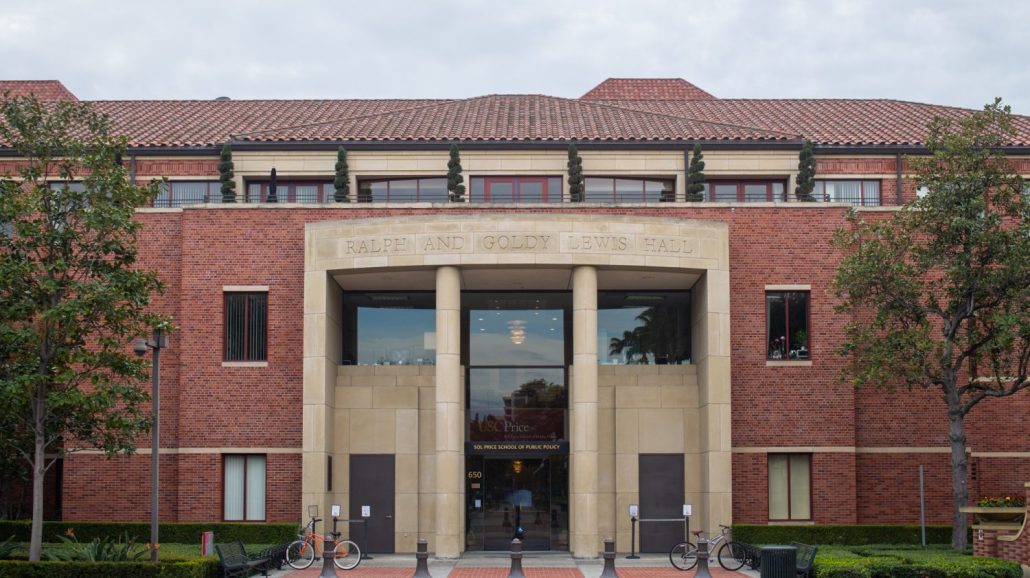
When Annette Kim, associate professor of public policy, began seeing lease and closing signs displayed at local businesses, she was inspired to work with her students to preserve legacy businesses in certain Los Angeles neighborhoods like Little Tokyo and historically Black Santa Monica.
Every year, Kim teaches the “Urban Spatial Ethnography and Critical Cartography” course in the Sol Price School of Public Policy. In the class, students partner with community-based organizations and city departments to create projects to assist with cultural asset mapping, or collecting and analyzing information to describe a community’s cultural resources. This year, Kim instructed her students to focus their projects on L.A. legacy businesses — businesses that have been part of the city’s culture for decades.
“Culture often is embodied in the small businesses,” Kim said. “A lot of times, people weren’t thinking of these businesses as culture bearers, but I think as they started being threatened, especially during the pandemic, people felt it would be a huge loss for the city. It’s part of what gives it its distinctive identities and so, the culture became supporting legacy businesses.”
Kim’s proposed solution to this problem was to make these businesses “more legible and easier to find, and [to] create content to show their value.” With this, she hopes that more people will want to visit them.
For Lindsay Mulcahy, a graduate student studying heritage conservation and urban planning, Kim’s course was special.
“[The course] was really all about different ways that people connect to place and how, really dissecting the physical landscape, through the lens of stories and visuals and data analysis, can give us a better understanding of what’s in a place and what makes it special to people,” Mulcahy said.
Mulcahy did her project for the course on Little Tokyo, highlighting its history and identity. She said that the projects are centered around people’s voices, their personal experiences and the history of the project’s chosen neighborhood.
“The project is all about getting to know people and getting to know a community that you’re not in,” Mulcahy said. “It’s also hard too because it’s about people’s stories and the cultural significance of these places, and then figuring out how to tie that to policy solutions is also difficult.”
Anthony Gill, a 2021 graduate with a master’s degree in public policy, said that, for him, one of the best parts of taking the course was being able to tell stories that people may not know much about.
“Being in public policy … we don’t really get to do things that center stories and people in this type of way, and then that gets to put together a product that’s pretty cool and creative,” Gill said. “Just getting the experience to put something together that’s a little bit unique, and hopefully tells a story [people] may not know that much about … It’s cool to get to kind of share a little bit about that story.”
Gill did his project on historical Black Santa Monica. When people think of Santa Monica, he said they think of the beach, shopping and the arts but not necessarily that there used to be a “really thriving Black community” there.
According to Kim, there was a greater emphasis on archival research and data analysis this year than in previous ones. In previous years, Kim encouraged her students to visit the places they were researching and to talk to people in person, both of which were not possible during the pandemic. However, this limitation provided new outcomes for the students’ projects, as it drove them to dig deeper into the history of the areas they were working in.
“Surprisingly, I think we had some of our best projects,” Kim said. “I’ve heard I have a reputation that this is a hard class. I asked a lot, but the students usually rise to the occasion and do amazing things.”
According to Caelan Rafferty, a 2021 graduate with a master’s degree in urban planning, instead of exploring the urban environment and interacting with the community in person, this year’s projects had to use previously made research, providing a “deeper understanding” of prior research.
Rafferty also did his project on Broadway business districts in Black Santa Monica, although he faced difficulties finding information on Black businesses.
“It was really rewarding to be in Professor Kim’s class and to have the different perspectives as we were looking into alternative histories because it was focused on histories and narratives that are not generally recorded,” Rafferty said.
Kim said she hopes her course will teach students to get creative and gather data that they need to understand different places.
“I think it’s been helpful for [marginalized groups and community based organizations] to see those communities valued, and put extra attention on,” Kim said. “Because a lot of times, that data can misrepresent them.”
"local" - Google News
May 26, 2021 at 02:00PM
https://ift.tt/3fKymnD
Class finds hidden stories of local businesses - Daily Trojan Online
"local" - Google News
https://ift.tt/2WoMCc3
https://ift.tt/2KVQLik
Bagikan Berita Ini














0 Response to "Class finds hidden stories of local businesses - Daily Trojan Online"
Post a Comment